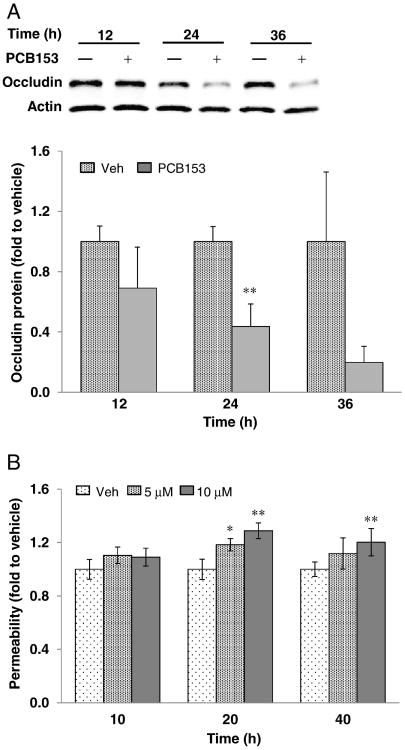Fig. 4.
PCB153 decreases the expression of occludin. (A) Confluent hCMEC/D3 cells were treated with 5 μM PCB153 for the indicated time periods. The levels of occludin in total cell lysates were assessed by immunoblotting and the occludin levels in PCB153-treated cells were compared to that of vehicle-treated cells at the indicated time point. Actin levels were assessed as an internal standard. The blots are representative from three experiments. (B) Confluent hCMEC/D3 cultures on the upper side of Transwell inserts were exposed to 5 μM or 10 μM PCB153 for the indicated time periods. Then, integrity of hCMEC/D3 monolayers was assessed using FITC-dextran (20 kDa) as the permeability marker. Values are mean ± SD, n = 4, *p < 0.05 and **p < 0.01 when compared to control cells (vehicle treated cells).

